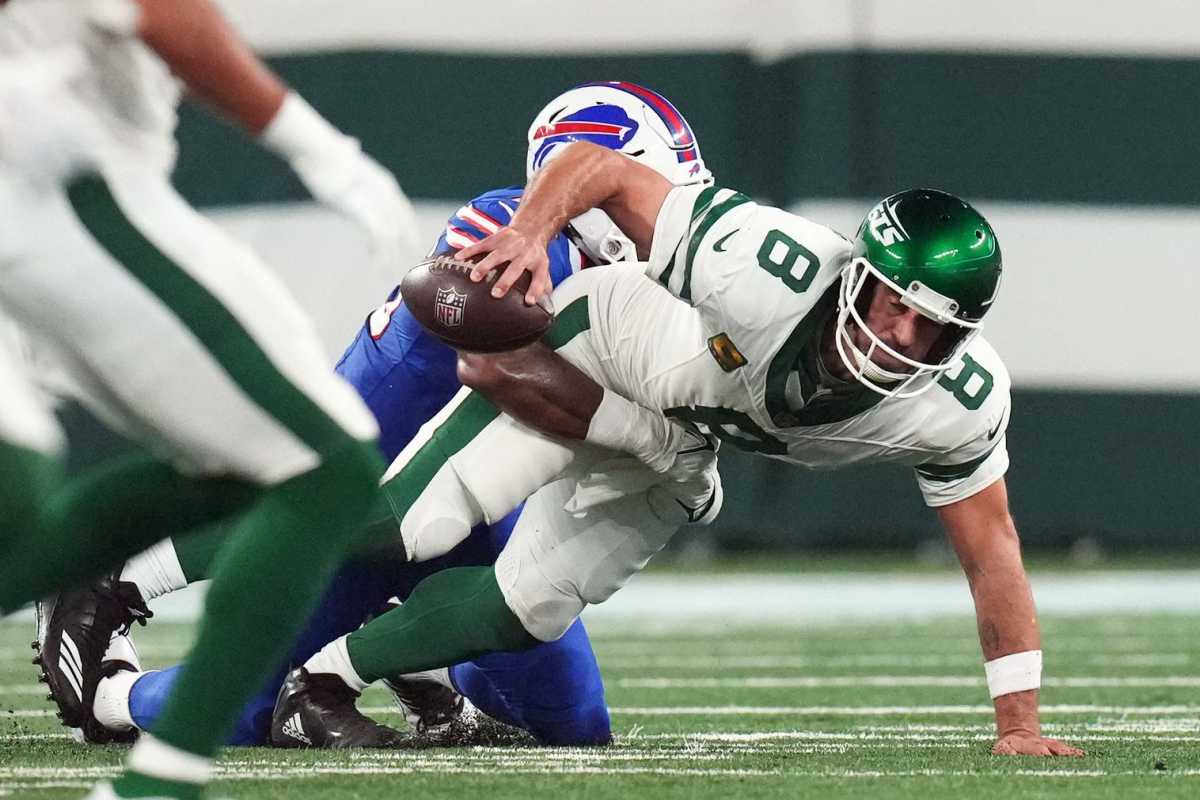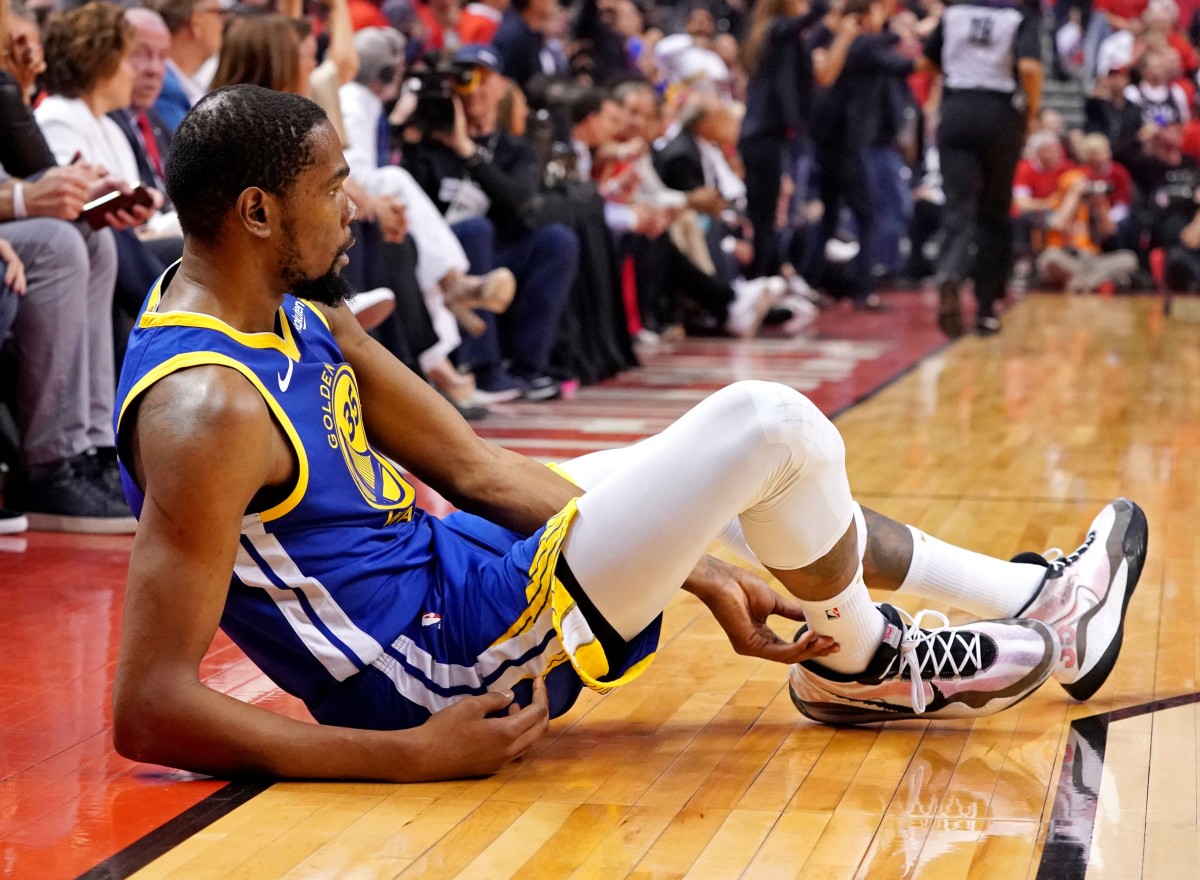Aaron Rodgers’s Injury: Achilles Tendon Experts Answer Key Questions

When Aaron Rodgers tore his Achilles four plays into the season on Monday Night Football, it stirred familiar feelings around the nation, and not just because something bad happened to the Jets.
Some, like the NFL Players Association and Rodgers’s former teammate David Bakhtiari, saw it as another example of artificial turf causing an injury. Others got flashbacks to 2019, when Kevin Durant sat out several Warriors playoff games with a Grade 1 right calf strain, returned for Game 5 of the NBA Finals, and promptly tore his right Achilles. Rodgers, after all, battled a calf injury this year.
Did turf cause the injury? Did his calf strain make him vulnerable? Was it a fluke? Could the Jets have seen this coming—and therefore taken preventative steps? Is there any way to predict Achilles tears?

There are a lot of questions, and if we could find solid answers, we could change careers and alter the trajectory of franchises.
A torn Achilles is often called the worst injury in sports, which isn’t quite accurate. The worst injury in sports is—obviously—getting run over by a Zamboni. But a torn Achilles might be the most feared injury in sports, because the rehabilitation process is long and brutal, many athletes never make it back and those who do rarely perform at the same level. Other injuries happen more frequently. But Achilles tears are particularly devastating.
I talked to three Achilles tendon experts about Rodgers’s injury specifically and Achilles tears generally. The answers were not conclusive, but they were insightful. They left me believing that we should, at the least, stop accepting Achilles tears as tragic flukes and start asking whether it is possible to reduce the risk.
Let’s start with Rodgers. Connecting his Achilles tear to his calf injury sounds logical. The problem? While Rodgers has injured his left calf in the past, it is not clear that he injured it this year. He injured his calf and took significant time off in the spring, but that was his right calf. In August, he did indeed grab his left calf in training camp, which spawned headlines and conversation, but there was no indication he actually injured it.
There is some dark humor in Aaron “I’ve been immunized” Rodgers being the subject of a medical conspiracy theory. But the implication that a recent calf injury led directly to his injury this week is not supported by the facts or science.
Could previous calf injuries have contributed? Dr. Nigel Hsu of Johns Hopkins says, “I have personally seen patients who’ve had some calf injury and then later had an Achilles rupture.” But he watched the video of Rodgers’s injury and says, “His foot got caught, and the ankle dorsiflexed [the backward bending and contracting of your foot], so the calf strain was probably not related.”
As for the MetLife Stadium turf: It may cause injuries, but it is unlikely to have caused this injury. Hsu says: “It’s not like slipping or how the ground is gripping causes the Achilles rupture.”
Dr. James Holmes of the University of Michigan says, “I don’t think this was a turf or no-turf thing.”
Aaron Rodgers injury coverage
Manzano: Winners and Losers NFL Week 1
Manzano: 10 QB Options for the Jets
Manzano: Wilson Gives Jets Tiniest Sliver of Hope
Orr: Rodgers’s Injury Yet Another Stunning Moment for Tortured Jets Fans
Orr: The Jets Can Still Make the Playoffs Without Rodgers
Breer: Aaron Rodgers, Jets Likely to Still Be Together in 2024
Breer: In Grass vs. Turf Debate, NFL Owners Still Won't Spend to Protect Their Players
If you view Rodgers as a single medical case to solve from a distance, you won’t get very far. But if you view him as one data point among many, this gets more interesting.
Here are some facts—presented not as a medical argument, but for consideration.
1. Holmes says: “The classic Achilles tendon tear is a late-30s, early-40s male recreation athlete.”
2. Rodgers is 39. He is not a recreational athlete. But 39 is still 39, and Holmes says, “Our tendons are different when we’re 40 than when we’re 20. Our bones get a little bit thinner. Our tendons have less tensile strength. So that probably has something to do with it.”
3. Hsu says he has seen a lot of instances of “weekend warriors who maybe haven’t played for a while, and their buddies begged them to come out … and then, a few plays in, they get a snap.” Holmes says: “In the recreational athlete, you’re submitting the tendon to loads that it’s not accustomed to seeing.” People rarely tear an Achilles in the middle of a marathon, where every step is easily anticipated, and competitors have generally trained for months. But Holmes says it is starting to happen regularly in pickleball, which involves sudden turns and plants—and which many people play without training for it.
4. Rodgers tore his Achilles in his first game of the year—after a brief appearance in one preseason game.
Durant came back from his calf injury and immediately tore his Achilles.
Fellow Warriors star Klay Thompson tore the ACL in his left knee in 2019, worked his way most of the way back, and then tore his right Achilles tendon during a workout.
In 2018, cornerback Jason Verrett tore an Achilles during a conditioning test on the first day of Chargers training camp. Last year, he tore an Achilles again—two weeks after being put on the 49ers’ active roster while he was still a limited participant in practice.
Broncos receiver Tim Patrick missed the 2022 season with a knee injury, returned this spring, then tore his left Achilles on the third day of training camp.
Last fall, the Memphis Grizzlies’ Brandon Clarke played through left hip soreness for a month. By early January, the injury was bad enough that he was inactive for five games. He returned—and two months later, he tore his left Achilles.
Jaguars rookie Ventrell Miller missed the Senior Bowl, the NFL combine and Florida’s pro day after breaking a bone in his foot. He tore his right Achilles in a preseason game this fall.
Marlon Mack tore his right Achilles in Game 1 of the 2020 season. This summer, he signed with the Cardinals—and five days later, he tore his left Achilles.
When NFL players returned to official workouts after the 2011 lockout, there was a surprising uptick in Achilles injuries.
This is all anecdotal, not statistical. It is not nearly enough to support a paper for a medical journal. Doing a statistical study that would stand up to that kind of scrutiny is almost impossible. There are too many variables. Pro athletes are not recreational athletes. Sports and athletes are all different. Weather conditions vary, field conditions vary, types of plays vary … there would be a lot of noise in any data set. If you just wanted to examine the correlation between prior injuries and Achilles tears, how would you even do it? Every player in the NFL has prior injuries.
And yet … it sure seems like we can learn something from this. Older athletes are more susceptible. Those who are quickly ramping up activity—like those returning from injury—seem more susceptible, too.
“Long periods of time off—there probably is something there,” says Dr. David Geier, the author of That’s Gotta Hurt: The Injuries That Changed Sports Forever and an orthopedic surgeon. “We don’t have hard data. [But] that seems to be a factor, at least in a percentage of the ones we’ve seen in pro athletes.”
Geier also says, “A lot of us suspect some sort of prior injury may increase the risk.” One theory is that if athletes put a lot of wear on their bodies, then go through a period of inactivity, then follow it with a period of intense activity, they are at higher risk of an Achilles tear. Geier says: “There is a lot of anecdotal data that supports that.”

Durant. Rodgers. Thompson. Kobe Bryant, too. In March 2013, he suffered what was described as a “severely sprained” left ankle. He missed just two games, came back for the next 11 and averaged 43 minutes per game to help the Lakers clinch a playoff spot. In the 11th game, he tore his left Achilles.
Holmes says: “In the recreational athlete, you’re submitting the tendon to loads that it’s not accustomed to seeing. … It’s not just the load that’s applied in terms of magnitude, but it’s the ramp of the load or the speed at which the load is applied—which, in professional sports, is arguably greater, right?”
Again: The evidence is mostly anecdotal. It’s not nearly enough for the medical community to accept as scientifically proven.
But in pro sports, preventing even one serious injury can pay enormous dividends. The Jets are paying Rodgers nearly $37 million this year. The team and star were both hoping to win their second Super Bowls.
If an elite athlete could reduce the risk of an Achilles tear by even 10%, how much would that be worth? Personal trainers and teams should be asking this question—if they aren’t already.
Hsu says when his patients have calf strains, “We have them work with physical therapy, and certainly get to the point where it’s not painful and the conditioning is back to normal before we let them return to play.” Pro athletes are accustomed to getting back as soon as they can and playing through pain. But perhaps some of them should take extra time before doing so.
It is not fair to say the Jets could have stopped Rodgers from tearing his Achilles. But it is fair to wonder whether pro athletes could be more proactive about reducing the risk of this specific and devastating injury—likely with specific exercises to prepare the body for the kind of actions that lead to Achilles tears.
“It could be done,” Geier says. “I am a big fan of anywhere you can take steps to prevent injuries that you could.”
Geier says, “It would have to be individualized” for each athlete. But elite athletes often have individualized training regiments, and personal trainers don’t need theories to be scientifically proven before implementing them. They just need willing clients who trust them.
“It makes sense that if you maintain your flexibility and stay strong and all that sort of thing, then that ought to be preventative, right?” Holmes said. “I can tell you, there’s nothing really written about it. It’s common sense. You don’t need to prove that if you jump out of a plane without a parachute, the outcome is not going to be very good.”
